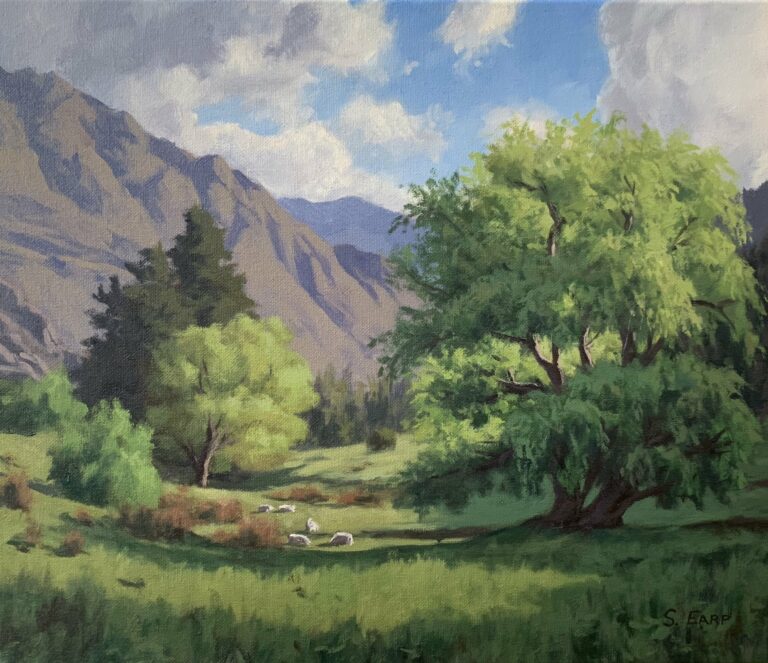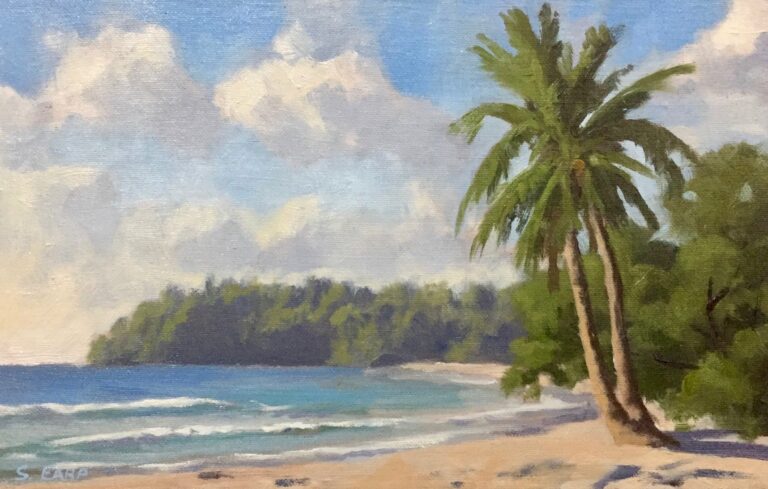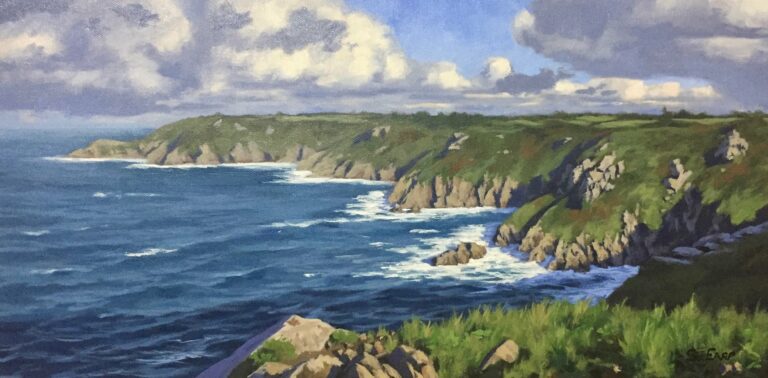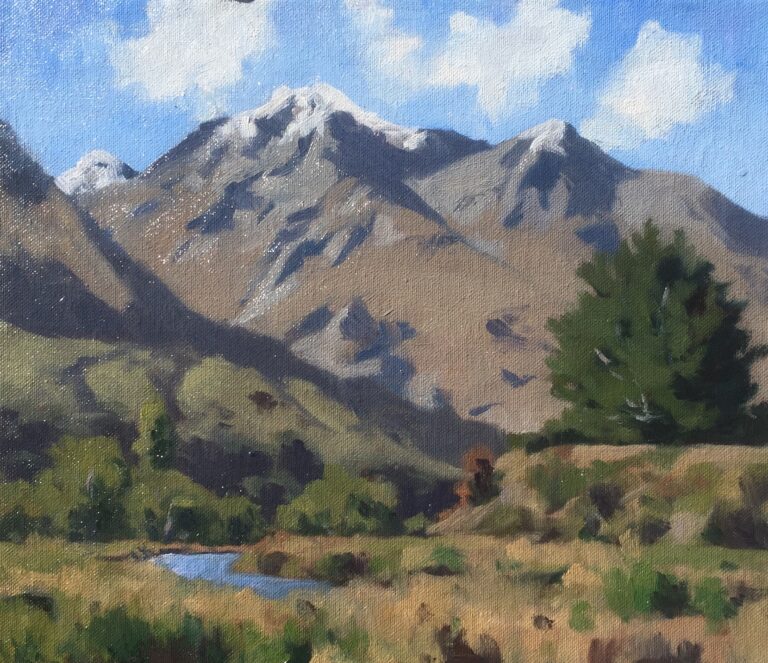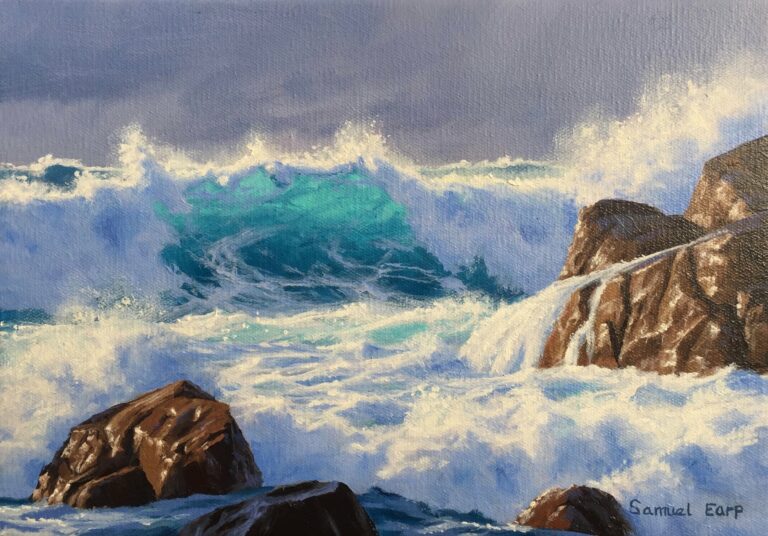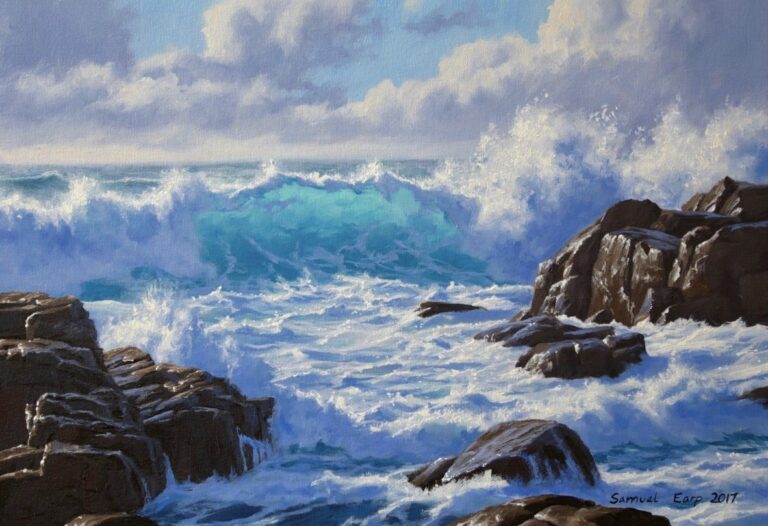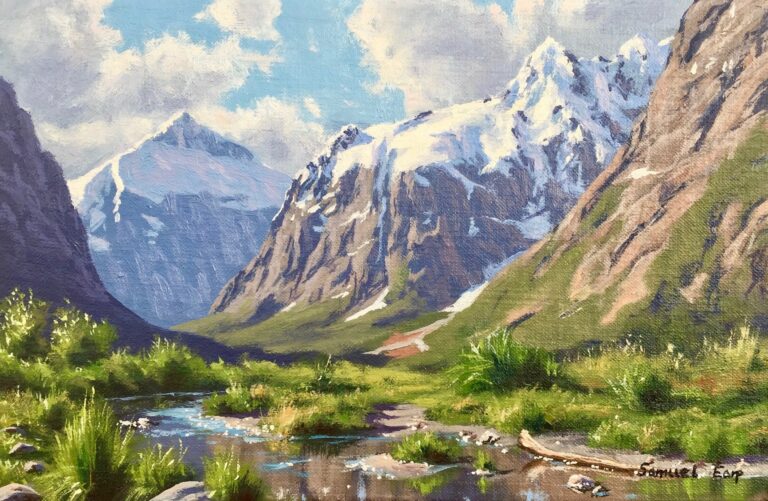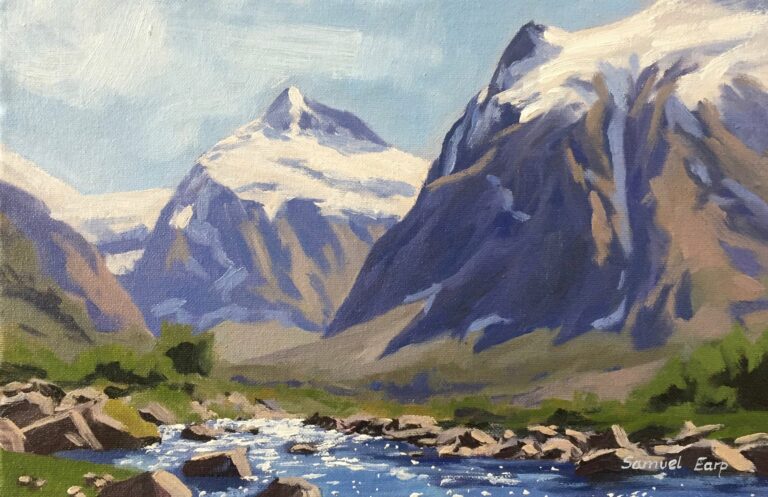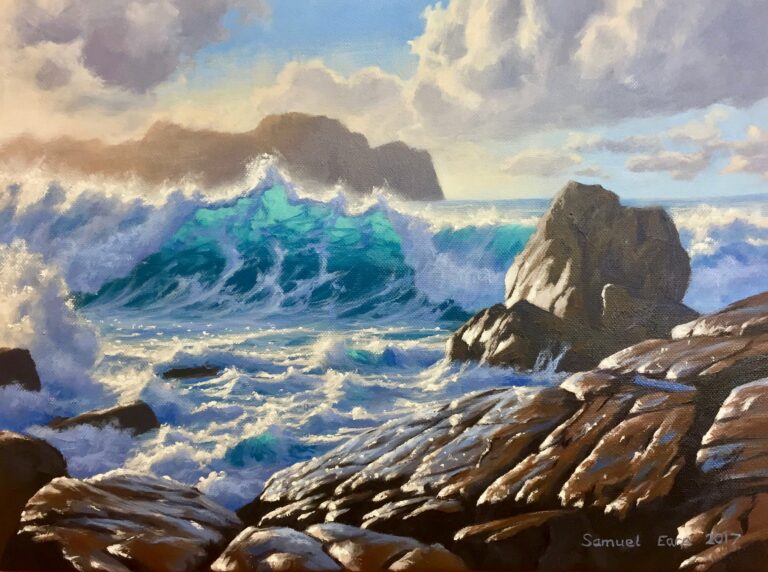How to Paint Trees and Light
The inspiration for this painting came from a location just a five minute drive from my art studio in Queenstown, New Zealand where I live. I happened to be driving through the valley one evening when I noticed the evening sun shining through the willow trees. Given it was spring and there was fresh foliage on the trees, the different hues of greens where really vibrant. I pulled over at the side of the road and took some photos. The idea for a painting was born!
